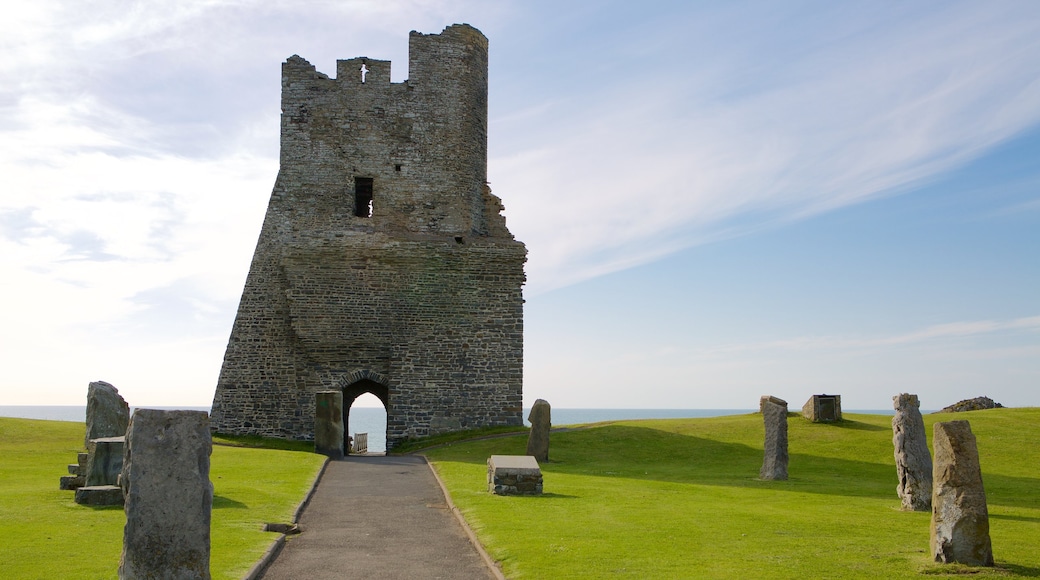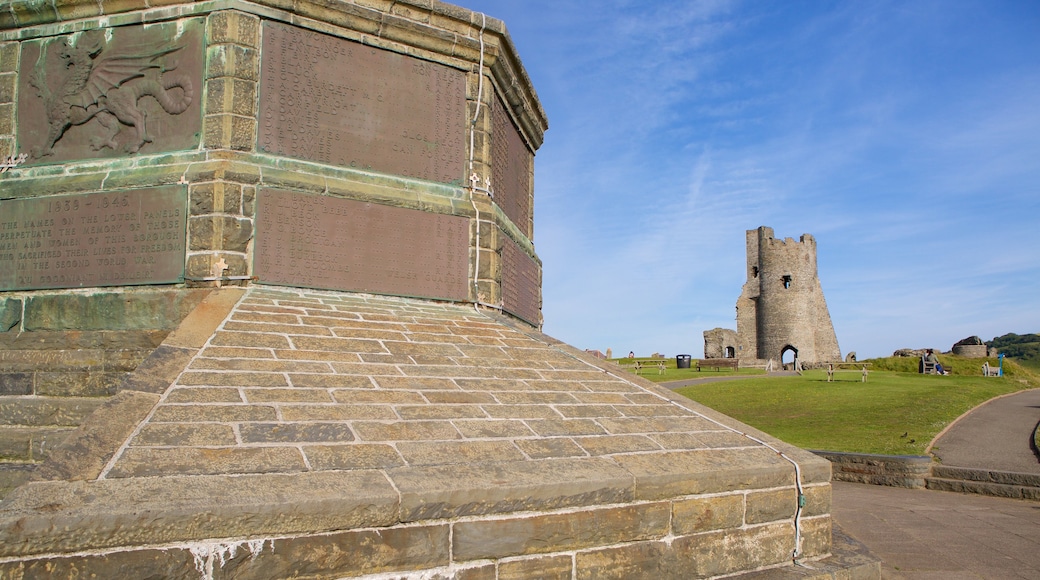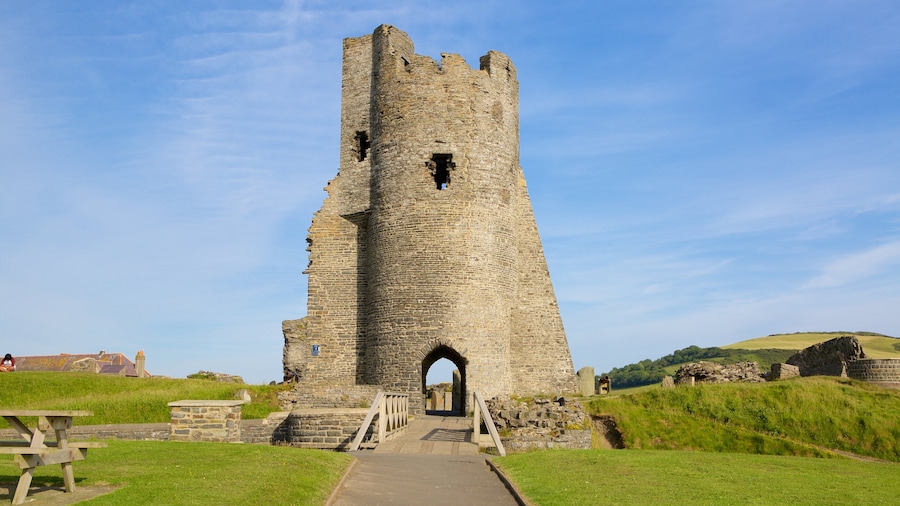Walk around the ruins of a 13th-century coastal fortress, once a powerful and important defensive stronghold for an English king.
Sitting on a promontory overlooking the Irish Sea are the ruins of Aberystwyth Castle. This 13th-century structure, built on the orders of King Edward I of England, would have once been a magnificent and imposing sight. Today, the collection of bricks, partial walls, foundations and remnants of buildings hint at its former glory.
Walk through the North Gate, one of the most impressive sections of the fortress left standing. Then explore the castle grounds where you will come across the remains of towers and gateways. View the circle of 13 stones, which was erected during the 1916 Eisteddfod, a festival of music, literature and performance.
The castle is known as a concentric castle and in its heyday would have had solid inner, middle and outer walls. Its current state is due to a number of factors, including its close proximity to the sea and an order for it to be razed to the ground in 1649. While you are exploring the ruins, pause to enjoy superb views over the sea.
The castle is also home to a war memorial to the fallen of the two world wars. Look up at the statue that tops the towering structure, a figure representing peace. At the base of the memorial look for the naked figure of a woman, which represents humanity emerging from the horrors and chaos of war. You will also see the inscriptions of the names of local men and women who were killed during both wars.
The stone steps at the base of the memorial are another good vantage point from which to take in the sea vistas.
After your visit, explore the park around the castle. There is a children’s playground, picnic areas and a crazy golf course.
Aberystwyth Castle is a short walk from the main train station in Aberystwyth. Drivers will find plenty of parking in the metered car parks near the attraction. There is no admission fee to explore the ruins.
















